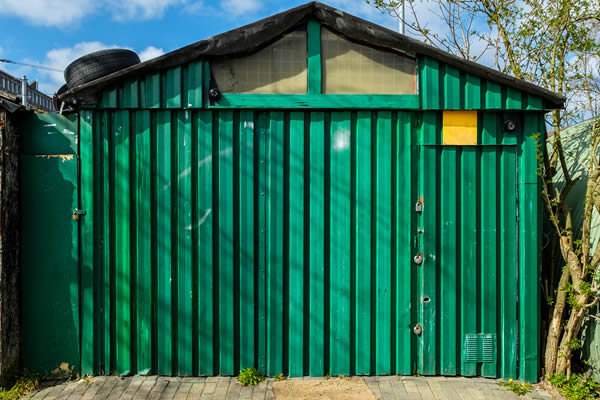Stop Your Shed From Overheating With Cool Roofing Materials
Author: Dan Stout | August 3, 2021
Garden sheds allow us to store tools and supplies out of the rain while still keeping them easily accessible. But they're also unconditioned spaces that are prone to baking in the heat. A shed's internal temperature can spike significantly during the summer, especially if it has a metal exterior or extensive sun exposure.

Beating the heat with smart shed construction can help give the materials inside a longer shelf life and keep you comfortable while you're potting plants or fixing a lawnmower. Here's how cool roofing materials can help keep your shed's interior closer to the ambient outdoor temperature.
Airflow and Ventilation
Always ensure your shed is properly ventilated. Allowing outside air to circulate through the shed structure prevents excessive heat from accumulating. When you're installing ventilation openings, the trick is to balance airflow with protection against the elements and animal intrusion.
Installing roof vents allow hot air to escape, while fresh air comes in via the eaves or wall vents. Traditional roof vents are passive, allowing air to move on its own. Active vents have a power source, such as a small solar-powered motor.
In some climates, ventilation may be all that's needed to maintain a shed's proper temperature. But sometimes, a more proactive approach is required.
Protect Your Shed With a Radiant Thermal Barrier
Airflow disperses hot air, but a radiant thermal barrier keeps the heat outside. Installed during or after construction, a radiant barrier beneath the roof or walls bounces heat away from the structure, acting as an invisible shade tree.
Radiant thermal barriers are especially effective in sheds with a metal roof or walls, where the "oven effect" is most noticeable.
Material Selection
Whether you're building a new shed or replacing an existing shed roof, using cool roofing materials or treatments can make a staggering difference. According to the U.S. Department of Energy, a standard roof can reach temperatures in excess of 150 degrees Fahrenheit in the summer sun. But under the same condition, a cool roof could stay as much as 50 degrees cooler.
Cool roofing material can be as simple as installing Energy Star-rated asphalt shingles, which use coated granules to reflect the sun's energy. Treatments for existing roof materials include paints or coatings that reflect thermal radiation. While something as simple as painting a roof white can make a difference, a specialty coating designed to act as a thermal shield will really reflect the rays.
Cool roof treatments work best on metal, tile or wood shingle roofs. Rolled roofing or asphalt shingles are generally not made to take coatings. A roofing contractor or local supplier can advise you on the best coatings for your roof type.
Thinking Outside the Box
Evaporative cooling is a popular and inexpensive way to cool almost any shed. Water that drips or mists onto a shed roof will reduce the temperature as it evaporates, just as the human body sheds heat by sweating. Some homeowners use rain barrels or sprinkler lines to provide the occasional misting on their shed roofs, helping to keep the temperature down.
Green roofs are another option, incorporating live plants to provide shade and insulation. They also make an excellent place to raise herbs or decorative plantings. For a shed, introducing a shallow soil layer with drought-tolerant plants will keep maintenance to a minimum. Because of the added weight and water issues, it's important to consult a professional contractor or roofing supplier to make sure your planned garden setup won't overtax the roof.
No matter what tactic you use, having a cool roof will give you a more comfortable experience every time you set foot inside the shed.